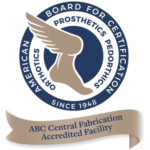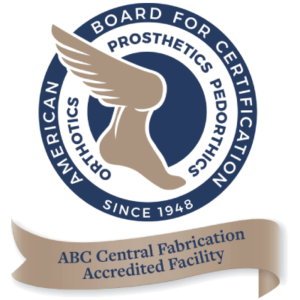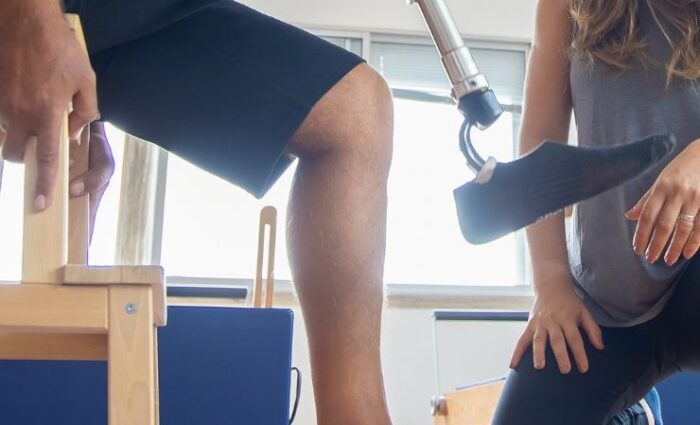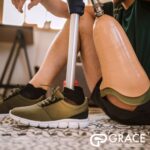What Medical Professionals Should Look For When Patients Report Issues with Their Prosthetic Devices
Proper prosthetic fitting is essential for patient comfort, mobility, and long-term success. When issues arise, medical professionals play a key role in identifying and addressing problems early. From skin irritation to alignment concerns, this guide outlines what to watch for and how partnering with a trusted prosthetics provider ensures optimal outcomes.
Table of Contents
- Why Prosthetic Fit Matters in Patient Recovery
- Most Common Prosthetic Fitting Issues to Watch For
- How to Identify a Poor Fit During Follow-Ups
- What Causes Fit Issues in Prosthetics?
- Tips for Medical Professionals to Improve Patient Outcomes
- FAQ
- Conclusion
Why Prosthetic Fit Matters in Patient Recovery
The success of a prosthetic device hinges on how well it fits. Even the most advanced prosthetics can lead to discomfort or injury if the fit isn’t just right. For patients, this affects more than physical function, it influences confidence, independence, and quality of life.
Medical professionals, including physicians, prosthetists, therapists, and nurses, are instrumental in recognizing fit problems before they become serious. By understanding the signs of poor prosthetic fitting, they can advocate for timely adjustments or refinements that protect the patient’s progress.
Most Common Prosthetic Fitting Issues to Watch For
Prosthetic fitting problems can present in many forms. Here are the most frequent issues clinicians should look out for:
1. Skin Irritation or Breakdown
Redness, sores, and rashes are signs of pressure points or friction. These issues often develop when a socket is too tight, too loose, or poorly aligned.
2. Pain or Discomfort
Pain during wear, especially localized pain, may signal poor weight distribution, an ill-fitting liner, or improper limb positioning inside the socket.
3. Inconsistent Gait or Instability
Patients may begin to limp, favor one side, or have trouble balancing if the prosthesis is misaligned or causing pain.
4. Slippage or Looseness
A prosthesis that shifts, rotates, or falls off during use typically lacks proper suction, suspension, or padding.
5. Excessive Perspiration
Sweating is common, but too much can indicate poor ventilation or excessive movement inside the socket.
By asking the right questions and observing how patients move, providers can spot these signs early and refer for adjustments or replacements.
How to Identify a Poor Fit During Follow-Ups
Prosthetic fit is not a one-time achievement, it’s an evolving process that should be monitored over time. During regular follow-up visits, medical professionals should:
- Inspect the residual limb for skin changes, swelling, or bruising
- Ask about daily wear time and whether patients remove the prosthesis due to discomfort
- Observe movement and look for changes in gait, posture, or symmetry
- Check alignment and range of motion with and without the prosthesis
- Review patient-reported pain levels and mental well-being
Documentation and communication with the prosthetist are key, especially if changes in limb shape or weight are contributing to fit issues.
What Causes Fit Issues in Prosthetics?
Understanding the root cause of a poor prosthetic fit helps guide both prevention and correction.
Common causes include:
- Residual limb volume changes (due to weight loss/gain, swelling, or healing)
- Socket wear and tear over time
- Incorrect initial casting or measurement
- Inappropriate suspension systems
- Unstable alignment after installation
Some of these changes are gradual, while others can happen quickly, especially in the first year post-amputation. This is why early intervention and ongoing adjustments are so important.
Tips for Medical Professionals to Improve Patient Outcomes
Your collaboration with a trusted prosthetics provider, like Grace Prosthetic Fabrication, can make a significant difference in patient satisfaction and success. Here’s how to play a proactive role in better fitting:
- Encourage open communication – Ask patients about their comfort and listen carefully to concerns that may hint at deeper issues.
- Schedule regular assessments – Especially during the first 6–12 months of prosthetic use, when limb volume and gait are most likely to change.
- Partner with prosthetists – A strong referral relationship speeds up adjustments and ensures patients are supported holistically.
- Educate patients – Teach them how to check their skin, clean their device, and spot signs of fit problems early.
- Promote follow-through – If a fit issue is suspected, emphasize the importance of timely repairs or socket remakes rather than “toughing it out.”
FAQ
How often should a prosthetic be refitted or adjusted?
Adjustments may be needed several times in the first year. After that, yearly check-ins are recommended, with refitting every 2–5 years, depending on limb changes and wear.
Can a poor fit lead to long-term injury?
Yes. Chronic pressure or instability can cause joint strain, skin breakdown, or even injury to the residual limb or contralateral side.
What should patients report to their providers?
Any pain, skin irritation, unusual movement, slippage, or decreased wear time should be reported right away.
How can prosthetists and medical professionals work together?
Regular communication, shared patient notes, and collaborative follow-ups lead to faster problem-solving and better long-term outcomes.
What makes Grace Prosthetic Fabrication stand out?
Grace Prosthetic Fabrication uses precision engineering and high-quality materials to deliver long-lasting, comfortable custom prosthetics. We work closely with providers to ensure every device supports healing and confidence.
Contact Grace Prosthetic Fabrication for Custom Fitting Prosthetics
Fitting issues are among the most common challenges prosthetic users face, but they’re also among the most fixable. With the right knowledge and collaborative care, medical professionals can catch and correct problems early, ensuring that patients receive the comfort, mobility, and confidence they deserve.
At Grace Prosthetic Fabrication, we’re committed to supporting providers with custom prosthetics that prioritize both function and fit. Whether you’re managing a new amputee or long-term prosthetic user, we’re here to help you deliver exceptional care.
Have a patient with prosthetic fit concerns? Contact Grace Prosthetic Fabrication to learn how our solutions can help.





